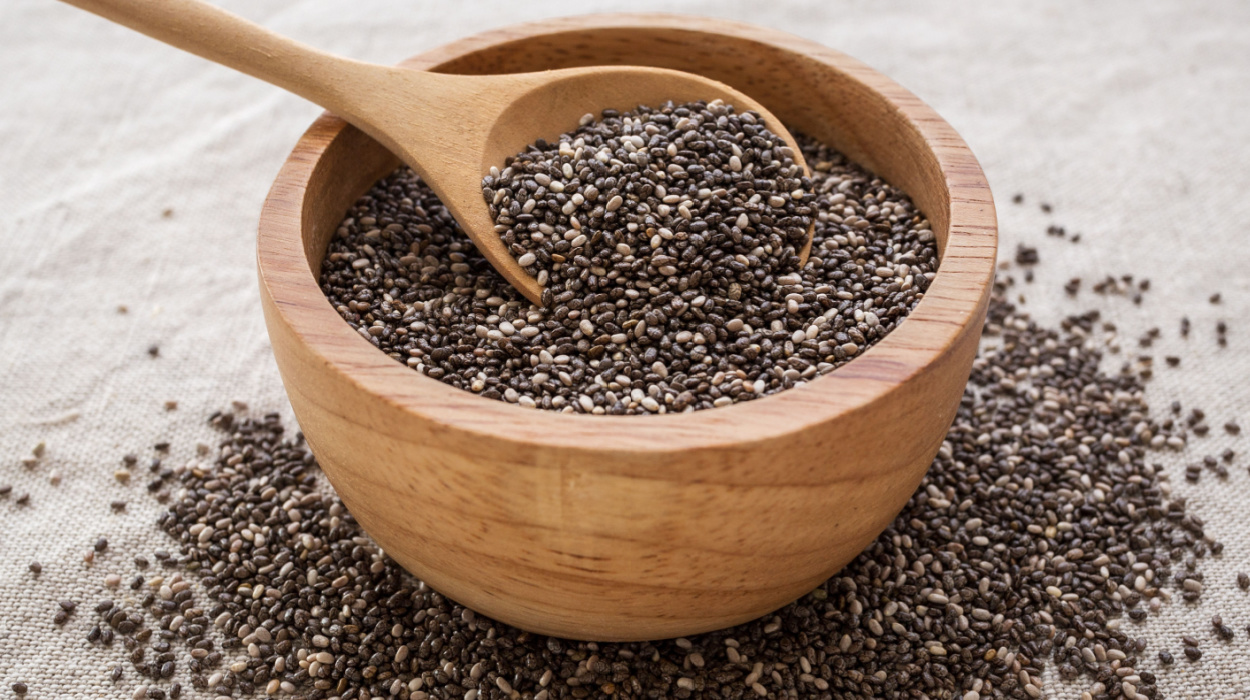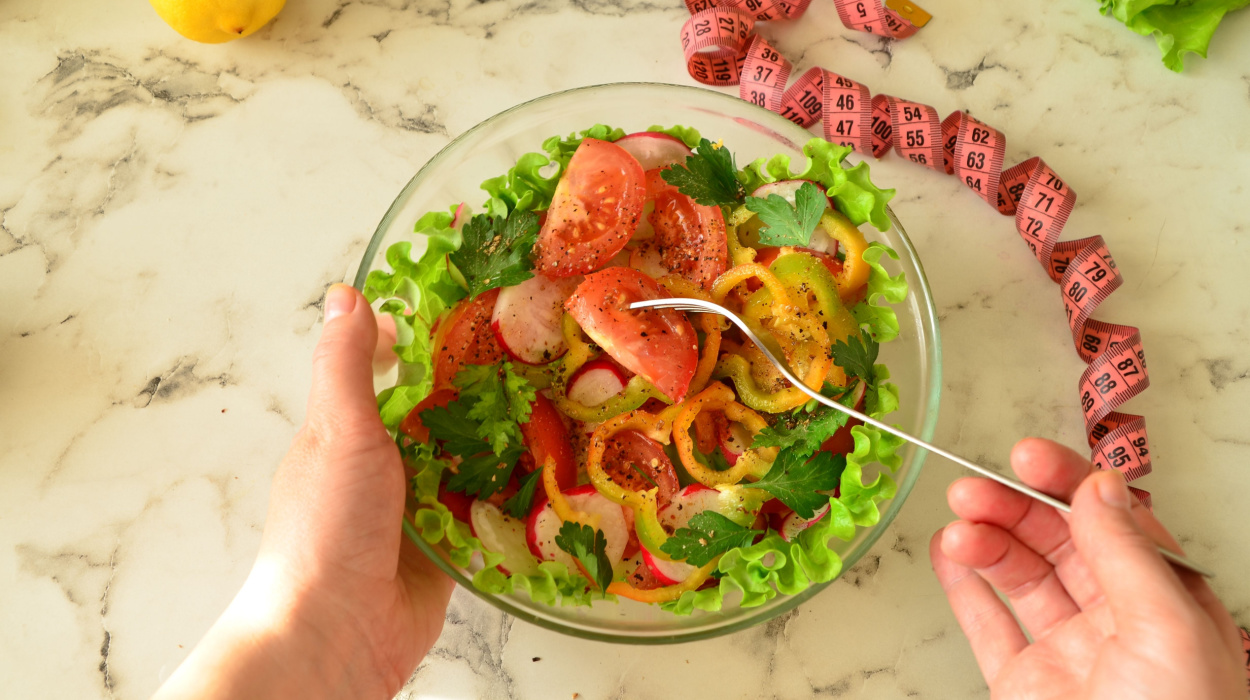Feeling full on fewer calories might sound like another weight loss gimmick, but it’s not. You’ll stay full with the proper low-calorie diet while achieving better weight loss results.
There are so many weight loss diet options, but they all seem to take the fun out of enjoying tasty food. However, this article proves that losing weight doesn’t mean abandoning all your favorite foods for diet pills and tasteless dishes. Learning about the foods to avoid and incorporating low-calorie foods for weight loss into your diet regimen can help you attain the desired weight.
Best Low-Calorie Foods For Weight Loss
Low-calorie foods for weight loss include the following:
- Oats.
- Chia seeds.
- Almonds.
- Air-popped popcorn.
- Soup.
- Mushrooms.
- Chicken Breast.
- Eggs.
- Apples.
- Grapefruit.
- Crunchy Veggies.
- Seafood.
Low-Calorie Foods For Weight Loss
It’s usually challenging to formulate a low-calorie diet plan during your weight loss journey. That’s because most of the foods we eat, especially processed ones, are high in calories. Processed foods[1] tend to be high in calories and tasty but offer little nutritional value.
Calculating the net carbohydrates in such foods can give you an idea of how unhealthy they are.
Nonetheless, many tasty, filling, versatile, low-calorie foods can supplement your weight loss efforts. You can include These low-calorie foods in your diet to lose weight quickly.
Oats

Oats are among the best high-fiber foods you can add to weight-loss regimens. They have a relatively low-calorie composition, with a half-cup of dry oats containing 150 calories.[2] Oats also expand when you cook them in water, helping you feel satisfied after eating a small portion with a few calories.
Oats are also rich in beta-glucans. This soluble fiber absorbs water as it moves through your digestive system, reducing your hunger and appetite. The beta-glucans stabilize sugar levels[3] during weight loss by minimizing the spikes and crashes that typically lead to overeating.
Chia Seeds

Your weight loss diet could also include some chia seeds. Their low-calorie density[4] and high fiber content help keep you feeling fuller for longer, reducing the urge to snack between meals.
Chia seeds are high in soluble fiber,[5] which absorbs water and expands, helping to promote fullness. So, eating small portions will make you feel like you’ve eaten a whole meal and satisfy you for the whole day.
Soup
Research[6] suggests that some soups are more satisfying than solid foods with similar ingredients. Blended soup slows digestion and is more effective at keeping you satiated than solid meals. They are also an excellent alternative to meet your body’s daily fluid requirements, especially for individuals not inclined to drink water as recommended.
Eating soup before meals can help you feel full and decrease your total calorie intake. Since soup is a relatively light meal, consuming it for dinner may help you lose weight because it’s easier to digest. That’s particularly true if you track the calories you burn while sleeping. However, while creamy soups and chowders are filling, they may be high in calories. Therefore, consider stock or broth-based soups to maximize fullness and minimize calorie intake.
Almonds
A single serving of 12 almonds provides approximately 84 calories.[7] Eating almonds leaves you feeling fuller and reduces the possibility of consuming sugary snacks.
Like other nuts, almonds are rich in fat. Even so, they’re a weight-loss-friendly food packed with protein and fiber, known to increase satiety and prevent you from overeating. Studies[8] highlight the hunger-fighting effects of almonds, with a daily serving of 43 grams reducing hunger and the desire to eat significantly.
Eggs
Eggs are among the best low-calorie, high-protein foods for weight loss. They are nutrient-dense, low in calories, and rich in vital nutrients, with a large egg containing roughly 72 calories,[9] 6 grams of protein, and various minerals and vitamins. Starting your day with an egg serving at breakfast can boost satiety and reduce your calorie consumption during the day.
An egg serving in the morning can decrease snacking as it slows the emptying of your belly and lowers ghrelin levels. Ghrelin[10] is the hormone that triggers hunger between meals.
Besides calories, eggs are low in carbohydrates, which benefits those on a ketogenic or low-carb diet. Incorporating them into your diet may help you reduce your carb intake and manage weight loss more effectively.
Popcorn
Air-popped popcorn is something we rarely associate with weight loss. However, it is a low-calorie snack that’s also quite filling. An 8-gram cup of popcorn has 1.2 grams of dietary fiber,[11] approximately 5% of your daily fiber requirements.[12] But remember to choose air-popped as bagged microwave popcorn can be filled with unhealthy fats and calories.
Consuming popcorn can slow down the digestive process and promote fullness.
Additionally, popcorn can reduce appetite and increase satisfaction more than other popular snacking options.
Apples
Eating apples can help you shed weight while satisfying your sugar cravings. Apples are sweet since they are rich in natural sugars. They contain lots of fiber and keep you satisfied for longer, in addition to improving your digestive health.
Apples also require a lot of chewing, contributing to the feeling of satisfaction when you chew them. Avoid peeling apples because most of the fiber is concentrated on the skin.
Medium apples contain an average of 95 calories.[13] Smaller ones have as little as 65 calories, whereas larger apples may contain up to 126 calories. The low-calorie composition and high fiber content make apples one of the best high-density foods for weight loss.
Crunchy Veggies
Vegetables are low-calorie[14] and fiber-rich foods ideal for those looking to maintain a healthy weight. Most can be consumed either as the main meal, snack, or side dish, making them a healthy addition to most weight loss diets.
Besides being tasty, crunchy veggies are fiber-rich and ideal for those looking to improve their bowel health as they shed weight. Some of the most satisfying low-calorie crunchy veggies include broccoli, carrots, bell peppers, and cucumber.
Grapefruit
Grapefruit is juicy, nutrient-rich, fiber-rich, and low in calories. The fiber and fluids leave you feeling fuller for longer, while the nutrients promote your overall health. With its sweet taste, grapefruit prevents you from turning to processed sugars to satisfy your cravings.
Mushrooms
Mushrooms are also often ignored in the weight loss debate despite their low calories and high nutrition. While there are different types of mushrooms, all varieties are low in fat, calories, and carbohydrates. A cup of mushrooms contains 15 calories,[15] making them perfect for a weight-loss diet.
If you’re looking for a type of food that can keep you full while you fast or reduce your meal portions, few foods will do it better than mushrooms. They’re high in dietary fiber, making them great for satiety and improving metabolism. Moreover, researchers found[16] that medical and edible mushrooms can help treat obesity.
As an added benefit, mushrooms have low calories[15] even in high volumes. Therefore, you can eat significant amounts without overloading your body with calories. You can add mushrooms to your dinner for a nutritious, filling, low-calorie meal.
Chicken Breast
Chicken parts, like skinless chicken breast, can help you lose weight because they are low in calories and contain significant amounts of protein. A 4-ounce piece of chicken breast contains roughly 120 calories.
A piece of chicken breast has fewer calories[17] than the same serving size of beef. Plus, it contains half the fat. You can shred cooked chicken breast and add it to salads or use a lettuce wrap to make low-calorie tacos.
Seafood
When you’re not getting your low-calorie protein from chicken breast, you can always treat yourself to some seafood. A 2019 study[18] on the impact of eating seafood on obesity suggests that fish reduces the risk of insulin resistance, which often hinders weight loss.
The study further observed that both lean and fatty fish encouraged weight loss in participants. Including sashimi, nigiri, or other cooked fish in your diet plan can support weight loss efforts.
How Many Calories Should I Eat Per Day?
There is no universal recommended amount of calories that should be eaten since everyone is different. Your ideal calorie intake depends on several factors, such as age, medical history, physical activity, and health goals. So, someone concerned about how much cardio exercises they should do to lose weight should start by checking their daily calorie intake.
Younger people generally have a relatively higher calorie intake. If you are twenty-five years old, for instance, you’re more inclined to be more physically active than your parents, who are 60. Thanks to your relatively active lifestyle, your daily energy requirements must be equally high to match the body’s demands.
For a male adult, the ideal daily calorie intake[19] is 2,500. Female adults require at least 2,000 calories daily to meet their bodies’ energy demands. However, those recommendations may vary based on activity levels and health goals.
Conclusion
Hopefully, you’ve created the ideal weight loss diet from our list of the best low-calorie foods for weight loss. These foods will not only help you lose weight but also make you feel fuller as you try other weight loss methods like working out. However, remember that sustainable weight loss requires consistency.
Furthermore, you must constantly track the number of calories you eat to lose weight. Prioritize whole foods that promote fullness, and be mindful of your serving size. You should also keep track of the number of carbohydrates you eat daily.
Many low-calorie foods can help you increase your protein intake and promote stable blood sugar levels. Additionally, a healthy diet contains high-fiber foods that promote healthy gut motility and overall health.
If you have questions about how low-calorie foods supplement weight loss, you can always seek guidance from a registered dietitian.
Frequently Asked Questions
If your daily calorie intake is below 1,200 calories, you’re likely depriving the body of much-needed nutrients and energy. Your food intake might also be low, so you’ll feel hungrier.
You can survive on less than 1,500 calories a day but may feel more tired between meals, not to mention your metabolism will also reduce significantly.
Adopting a more physically active lifestyle is an effective way to boost your metabolism. You will burn more calories, even when the body is at rest.
Most people struggle to shed extra weight because they consume more calories than what’s needed for daily biological processes. Health concerns like diabetes can also make it harder for you to lose weight.
 Evidence Based
Evidence Based

